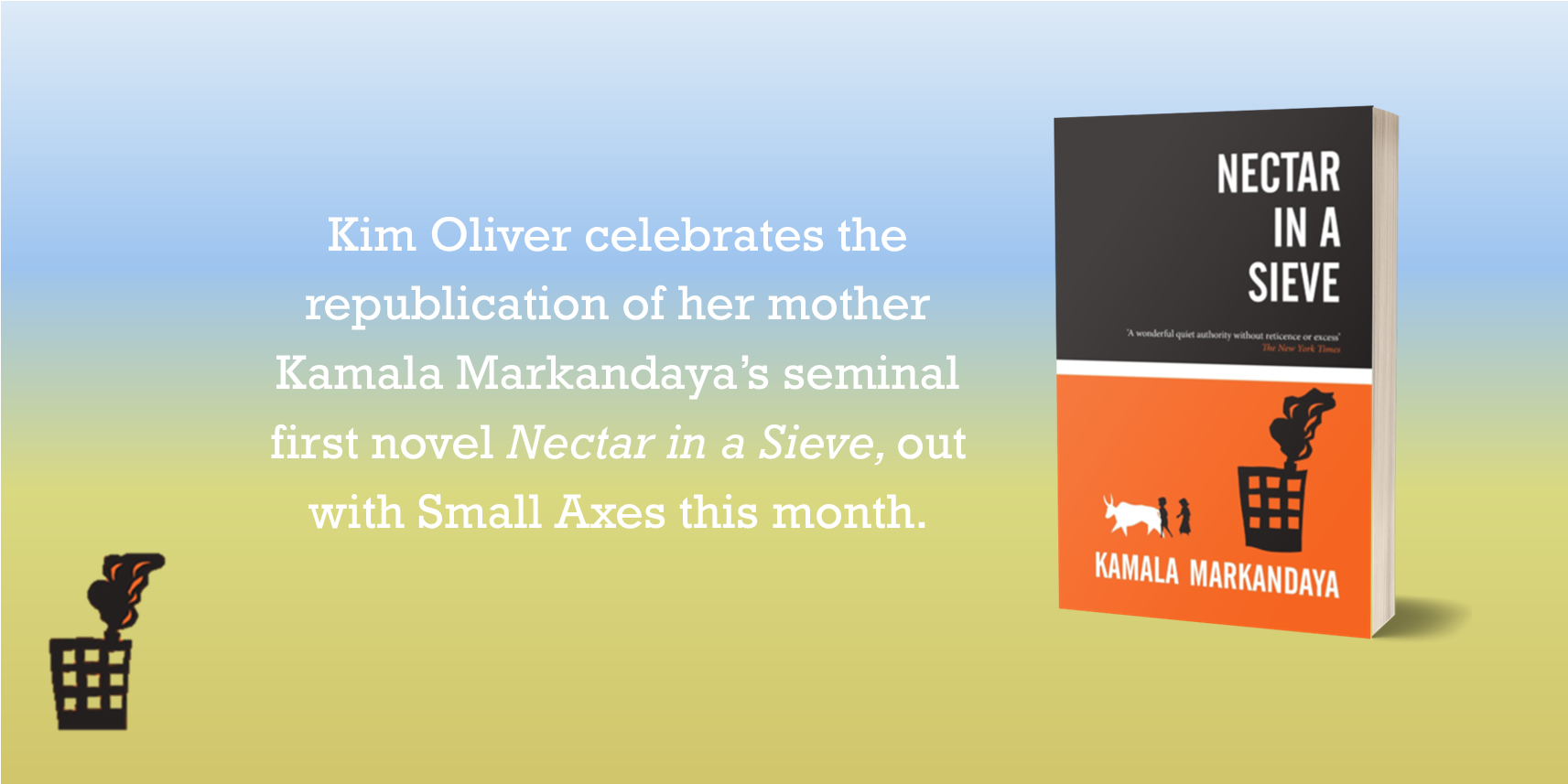
I’m so happy that my mother’s incisive, beautiful books are being rediscovered by a whole new generation. As well as being her daughter, I am her literary executor. And so it felt very timely to be discussing her writing at the Jaipur Literary Festival at the British Library last month as we approach the 100th anniversary of her birth next year. Internationally acclaimed, her work fell out of print towards the end of her life, and with the republication of Nectar in a Sieve by Small Axes, her astonishing first novel, her novels are now reaching the status of classics. Please do join us in celebrating the enduring appeal and legacy of Kamala Markandaya’s work.
Nectar in a Sieve was the first novel written by my mother, the Indian novelist Kamala Markandaya. It was originally published in 1954 in London, the city my mother had moved to in 1948, and it received instant acclaim. It was swiftly bought by the American publisher, John Day, and was then selected by the Book-of-the-Month Club, a prestigious honour guaranteeing sales – and fame. Her book was translated into seventeen languages. It is still taught in schools and colleges in India and the USA – a remarkable achievement after seventy years. I’m delighted that HopeRoad are now republishing it in the UK.
Reviews at the time of first publication were ecstatic. ‘A novel to retain in your heart’, sighed the Milwaukee Journal. The New York Times thought that ‘Nectar in a Sieve has a wonderful quiet authority’. To quote Penguin India’s Modern Classics edition: ‘Few novels ever published have celebrated the human spirit, its sheer resilience, with greater success.’ All true, I think. The central love story of the novel, the love of Rukmani and Nathan, which survives many tests and endures to the end of life, is deeply moving.
Nectar in a Sieve was published seven years after India gained independence. India had been a British colony for three hundred years, ruled by a British administration with puppet maharajahs concerned with enriching themselves. The large rural population had few resources to tide them over difficult times; simply surviving occupied their time, while the wealth of their country drained away to Britain. Central to 20th-century history was Mahatma Gandhi who rose up against this oppression. He had the support of the people, and in 1947 the long British occupation came to an end. To my mother’s generation this struggle was at the centre of their lives.
It was acknowledged among the leading writers of the time that what they should depict in their work was the lives of India’s poorest people. Markandaya tackled this head-on, basing her book on her close observations of rural life in the country where she had grown up. She gives a voice, not just to a peasant, but to a peasant woman – an unheard voice. She shows Rukmani happy in her own life, loving her husband and children and responsible towards them; sensitive to the rich natural environment around her as she tends her crops; literate, uniquely among her peers; spirited, and yet so vulnerable to the vicissitudes of life, because she is completely dependent on the forces of nature, and other human beings, perhaps hostile. If the harvest is bad, the family will go hungry, as they have little spare money and no help. If their land is repossessed, they will have nowhere to grow food and no source of income.
Markandaya writes with a fluid, polished, gentle style that disguises her hard-punching message. In the background of the novel is the knowledge that India is about to change: a lifestyle of poverty and acceptance that has gone on for centuries is about to be invaded by the modern world bringing with it the onslaught of capitalism. And Rukmani’s children are angry… The novel is such a page-turner, you can’t stop reading it, for the bittersweet, tragic story, the beautiful descriptions of the Indian countryside, and the remarkable evocation of life in an Indian village seventy years ago.
Kim Oliver
June 2023